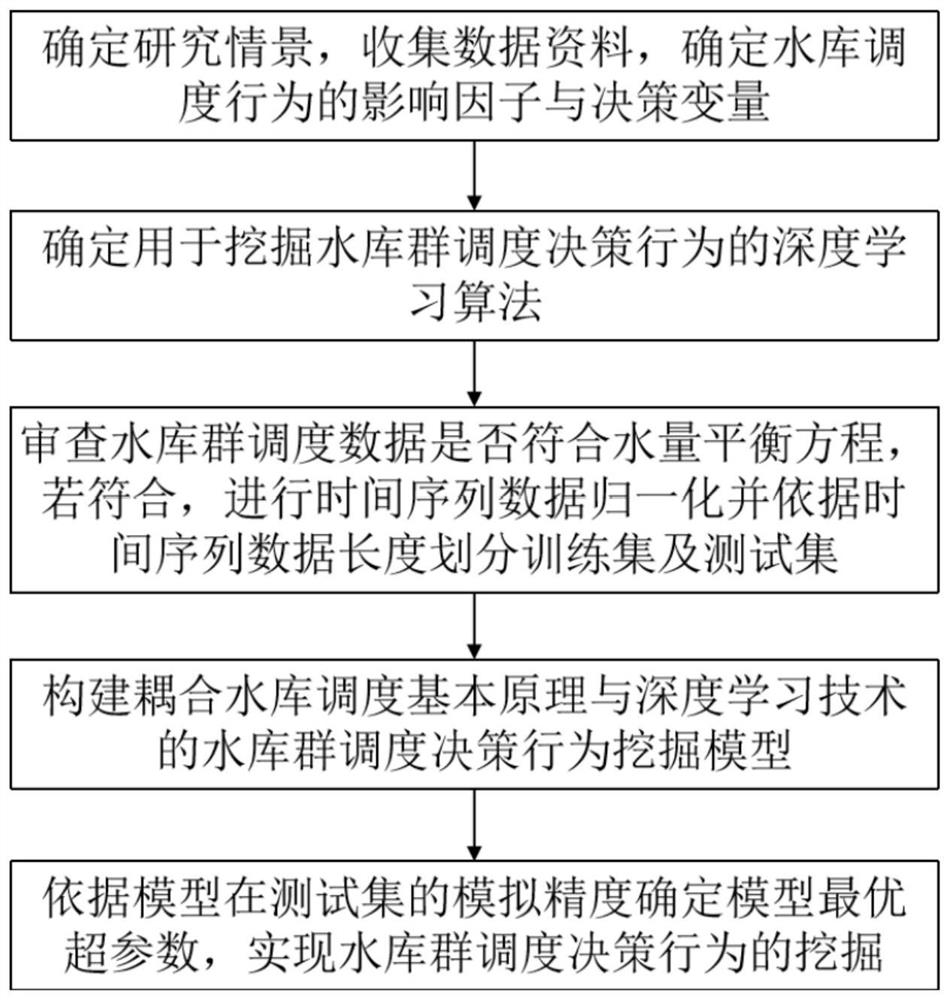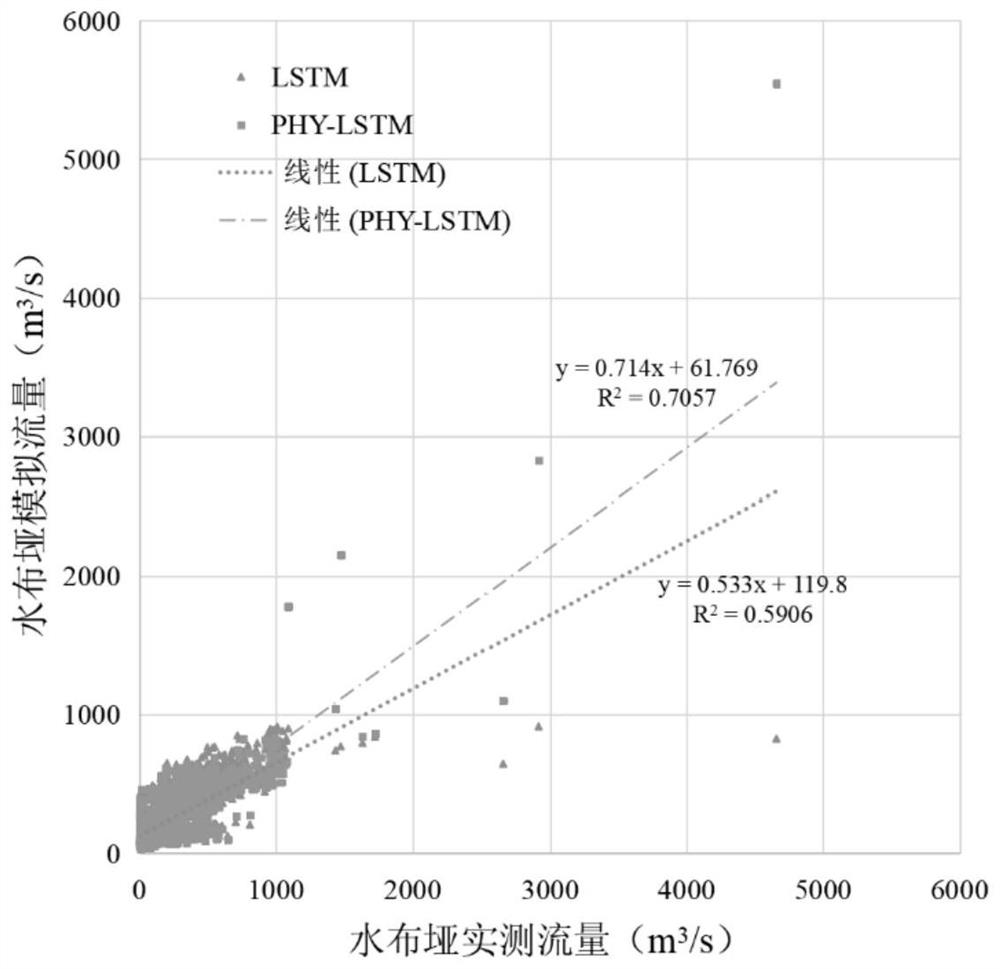Reservoir group scheduling decision behavior mining method and reservoir scheduling automatic control device
A technology of reservoir groups and reservoirs, applied in the mining of reservoir group scheduling decision-making behaviors, and the field of reservoir scheduling automatic control devices, can solve the problems of increased calculation difficulty, inability to obtain accurate and effective reservoir scheduling data, and difficulties in conforming to reservoir scheduling principles, etc. Achieve the effect of improving cognition and accurate model prediction results
- Summary
- Abstract
- Description
- Claims
- Application Information
AI Technical Summary
Problems solved by technology
Method used
Image
Examples
Embodiment Construction
[0066] The method for excavating reservoir group scheduling decision-making behavior and the automatic control device for reservoir scheduling involved in the present invention will be described in detail below in conjunction with the accompanying drawings.
[0067]
[0068] Such as figure 1 As shown, the reservoir group dispatching decision-making behavior mining method provided in this embodiment includes the following steps:
[0069] Step 1. Determine the research scenario, collect the basic information of the reservoir group system, historical dispatch data and meteorological data of the reservoir site, and determine the influencing factors and decision variables of the reservoir group dispatch behavior.
[0070] Step 2. Determine a deep learning algorithm for mining reservoir group scheduling decision-making behavior, such as a long short-term memory network (Long Short-term memory, LSTM) model.
[0071] Step 3. Check the accuracy of the scheduling data of the reservoi...
PUM
 Login to View More
Login to View More Abstract
Description
Claims
Application Information
 Login to View More
Login to View More - R&D
- Intellectual Property
- Life Sciences
- Materials
- Tech Scout
- Unparalleled Data Quality
- Higher Quality Content
- 60% Fewer Hallucinations
Browse by: Latest US Patents, China's latest patents, Technical Efficacy Thesaurus, Application Domain, Technology Topic, Popular Technical Reports.
© 2025 PatSnap. All rights reserved.Legal|Privacy policy|Modern Slavery Act Transparency Statement|Sitemap|About US| Contact US: help@patsnap.com



